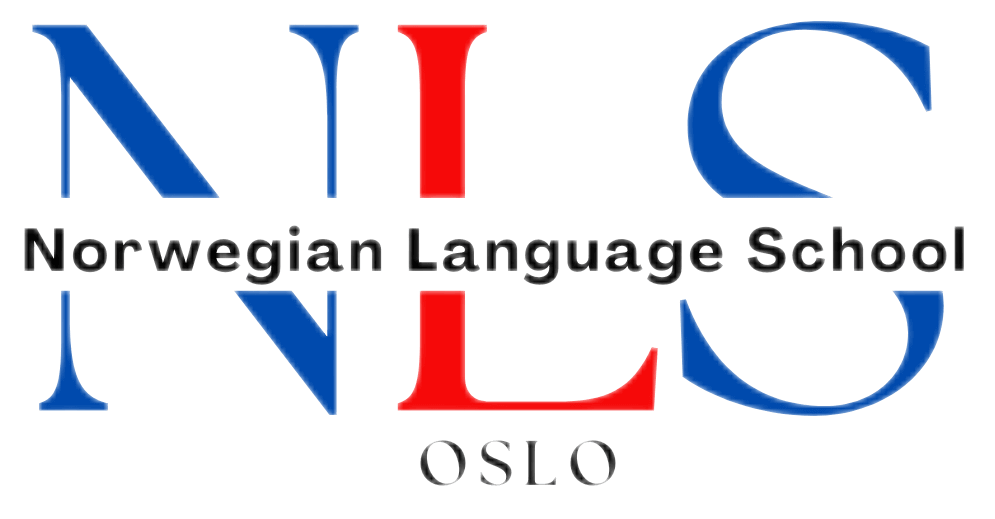

Harnessing Advanced Norwegian Vocabulary in Social Media Discussions
In an era where social media permeates every aspect of our daily lives—shaping political debates, fueling commercial interests, and redefining cultural expressions—it is no surprise that this phenomenon has also found its way into the Norwegian exam (Norskprøven) curriculum. The ability to discuss social media in Norwegian, especially by employing advanced vocabulary, can significantly boost your written and spoken performance and set you apart from other candidates. In this comprehensive article, we will delve into why advanced Norwegian vocabulary for social media topics is so crucial, explore specific high-level terms, and highlight best practices for incorporating these expressions into your exam responses. We will also discuss the importance of systematic preparation and recommend two invaluable resources for you: our dedicated Norwegian exam preparation course (https://nlsnorwegian.no/norskproven-course/)—mentioned twice herein—and our immersive Norwegian summer course (https://nlsnorwegian.no/norwegian-summer-courses/). By the end of this article, you will have a stronger grasp of how to navigate the intersection of social media and Norwegian language mastery, thus paving the way for outstanding exam results.
Table of Contents
Toggle1. The Growing Importance of Social Media Topics in the Norwegian Exam
1.1 A Rapidly Evolving Digital Landscape
Over the past decade, social media has evolved from a curious novelty into an indispensable communication tool. Platforms such as Facebook, Instagram, Twitter, TikTok, and Snapchat now facilitate political discourse, commercial advertising, and personal relationships. In Norway—known for its high internet penetration and active social media use—the digital sphere has become central to public debate and everyday interaction. Consequently, exam boards have recognized the significance of these platforms, regularly incorporating tasks or prompts related to social media in the Norwegian exam.
1.2 Why Social Media Often Appears in Norskprøven
- Relevance: Social media is a universal phenomenon with wide-ranging consequences in nearly every sphere, from politics to personal life.
- Rich Discussion: Discussions around social media can involve ethics, psychology, linguistics, and culture, giving examiners an excellent way to assess the depth of a candidate’s critical thinking and linguistic skills.
- Vocabulary Demonstration: The topic offers ample opportunities to showcase higher-level vocabulary—terms like «desinformasjon» (disinformation), «algoritmestyrt nyhetsflyt» (algorithm-driven news feed), and «influencer-markedsføring» (influencer marketing) can indicate a candidate’s advanced language proficiency.
Thus, it is no wonder that social media serves as an ideal lens through which examiners evaluate candidates’ ability to interpret, analyze, and articulate nuanced viewpoints in Norwegian.
2. Why Advanced Norwegian Vocabulary Matters
2.1 Standing Out in a Competitive Field
While basic phrases like «sosiale medier» and «informasjon» are useful, they may not be sufficient to demonstrate nuanced understanding. Mastery of advanced terms elevates your responses, signaling a level of sophistication and cultural awareness. For instance, if a prompt asks you to discuss the pros and cons of social media platforms, employing more intricate phrases—«ekkokammer» (echo chamber), «algoritmisk kuratering» (algorithmic curation)—indicates that you are informed about contemporary issues and can think critically.
2.2 Catering to Exam Expectations
Norskprøven—and related Norwegian language tests—are designed to measure not only grammar and syntax but also your ability to argue points effectively, compare perspectives, and integrate specialized terms. Examiners often look for:
- Precision: Using the right word in the right context.
- Variety: Displaying a broad vocabulary and avoiding repetitive language.
- Complexity: Balancing long and short sentences, using idiomatic expressions, and showing familiarity with emerging social and cultural concepts.
By deliberately weaving advanced Norwegian vocabulary relevant to social media into your oral and written answers, you show that you have a command of both the language and the subject matter.
3. Key Advanced Norwegian Terms Related to Social Media
Below is a list of advanced Norwegian terms you can use in your exam discussions about social media. Integrating these words will demonstrate linguistic breadth and depth:
-
Algoritmestyrt nyhetsflyt (algorithm-driven news feed)
Describes how social platforms push tailored content based on user preferences, behaviors, and interactions. -
Desinformasjon (disinformation)
Refers to false or misleading information spread intentionally, often for political or commercial gain. -
Ekkokammer (echo chamber)
Conveys an environment where an individual only encounters opinions that mirror their own, reinforcing existing biases. -
Influencer-markedsføring (influencer marketing)
Highlights the trend where individuals with large followings partner with businesses to promote products or ideas. -
Brukergenerert innhold (user-generated content)
Emphasizes how social media democratizes content creation, allowing ordinary users to produce blog posts, videos, photos, and more. -
Polarisering (polarization)
Speaks to the phenomenon where public opinion becomes divided into two extremes, often fueled by social media’s recommendation algorithms. -
Algoritmisk kuratering (algorithmic curation)
Focuses on the process of automated selection and arrangement of content based on user data. -
Personvernproblematikk (privacy/personal data issues)
Addresses concerns over how personal information is collected, stored, and potentially exploited. -
Kommersialisering av sosial interaksjon (commercialization of social interaction)
Reflects how social media platforms transform personal interactions into opportunities for targeted ads and revenue generation. -
Modereringspraksis (moderation practice)
Involves examining how and why social media companies regulate the content posted on their platforms, often balancing free speech with the need to remove harmful or hateful posts.
Learning these phrases and understanding their practical applications will allow you to tackle exam questions with sophistication. Moreover, you will be able to transition seamlessly between everyday expressions and academic or specialized terms—this flexibility is critical for higher-level Norwegian.
4. Positive Impacts of Social Media: Arguments to Include in Your Discussion
When constructing a balanced essay or response, it’s important to highlight the benefits of social media. Even though the online environment can be fraught with challenges, social media also brings value to modern societies. Here are some key points you could develop, along with relevant Norwegian vocabulary:
4.1 Democratic Engagement and Public Debate
- Samfunnsdebatt på digitale plattformer (community/societal debate on digital platforms)
Social media gives voices to ordinary people, allowing them to share opinions and engage in public discourse that once relied on traditional gatekeepers such as newspapers and television stations. - Digitalt medborgerskap (digital citizenship)
Encourages a sense of responsibility and participation in political and social matters.
4.2 Cultural Exchange and Visibility
- Tverrkulturell kommunikasjon (cross-cultural communication)
Social platforms facilitate dialogue between individuals from diverse backgrounds, enriching cultural understanding. - Mangfoldsperspektiv (perspective of diversity)
Exemplifies how social media can showcase various viewpoints, ethnicities, and lifestyles.
4.3 Educational Resource
- Umiddelbar informasjonsflyt (immediate flow of information)
People gain quick access to news updates, research findings, or educational materials. - Kunnskapsdeling (knowledge-sharing)
Experts can live-stream lectures or post tutorials, making specialized knowledge more accessible to a wider audience.
By integrating advanced words—like «samfunnsdebatt på digitale plattformer» or «mangfoldsperspektiv»—into your argument about the positive facets of social media, you establish a strong voice in your exam responses.
5. Negative Implications of Social Media: Balancing Your Viewpoint
While social media has democratized information and connected communities, it also brings a host of ethical, psychological, and societal challenges. Presenting these drawbacks comprehensively can demonstrate your critical thinking abilities. Below are common concerns worth discussing:
5.1 “Ekkokammer-effekt” and Polarization
- Ekkokammer (echo chamber)
Refers to an environment where algorithms consistently expose users to similar viewpoints, potentially reinforcing biases and narrowing perspective. - Polarisering (polarization)
When echo chambers become widespread, societies may experience deeper divisions and extremism.
5.2 Privacy Risks and “Personvernproblematikk”
- Datauthenting (data extraction)
Social platforms often collect user data for targeted advertising. - Personvernproblematikk (privacy concerns)
Raises questions about consent and the extent to which companies can profit from personal information.
5.3 Disinformation and Manipulation
- Desinformasjon (disinformation)
Misinformation or deliberate falsehoods can undermine trust in institutions and skew public debate. - Faktasjekk (fact-check)
Reflects growing efforts to verify online information, but the scale and speed of social media may outpace fact-checking organizations.
5.4 Commercialization and “Kommersialisering av sosial interaksjon”
- Kommersialisering av sosial interaksjon (commercialization of social interaction)
Highlights how platforms incentivize user engagement for profit, often at the expense of well-being or genuine human connection. - Influencer-markedsføring (influencer marketing)
Illustrates how personal relationships and content can blend with commercial interests, sometimes blurring ethical boundaries.
Balancing these negative aspects with earlier positive points shows a nuanced understanding. Remember to sprinkle relevant vocabulary throughout to demonstrate a well-rounded, informed stance.
6. Strategies for Incorporating Advanced Vocabulary in Your Norwegian Exam
6.1 Thematic Clusters
Organize vocabulary into thematic clusters—group words that relate to algorithmic processes, commercial dimensions, or privacy issues. This approach can help you remember them more efficiently. For instance, in your notes, you might group algoritmestyrt nyhetsflyt, algoritmisk kuratering, and datastyrt atferdsanalyse (data-driven behavioral analysis) together under a single heading like “Algorithms and Data.”
6.2 Contextual Integration
Aim to use advanced terms naturally rather than forcing them into your writing. A good rule of thumb is to introduce a high-level expression, then provide a short explanation or example that illustrates its meaning. This confirms to the examiner that you understand the term and are not merely memorizing definitions.
Example:
“Facebook and other platforms employ algoritmisk kuratering, where users are shown content tailored to their previous interactions, potentially contributing to an ekkokammer if they only see opinions that match their own.”
6.3 Balanced Registers
Mix technical vocabulary with clear, concise phrasing. Using advanced expressions is crucial, but avoid bogging down your essay or presentation with overly formal language to the point of obscuring your main argument. Remember that clarity is just as important as complexity in exam settings.
6.4 Practice with Feedback
If possible, seek feedback from a Norwegian instructor or a native speaker. Record yourself speaking about social media and its implications—using advanced vocabulary—and listen to your intonation, grammar, and fluency. Alternatively, write short opinion pieces (150–200 words) and have them critiqued. This iterative process will refine your usage and enhance your confidence.
7. Why Systematic Preparation Matters
7.1 Moving Beyond Self-Study
Though self-study can be beneficial, structured courses often provide a more comprehensive approach. With set syllabi, experienced teachers, and consistent peer interaction, you gain exposure to real-time corrections and discussions that elevate your proficiency.
7.2 Targeting Exam Formats
Norskprøven typically tests reading comprehension, listening, writing, and speaking. A course that tailors lessons to these four components ensures that you receive balanced training. You do not want to excel in vocabulary but neglect the listening component, for instance. Systematic instruction helps you pinpoint areas of weakness—maybe your grammar or your oral expression—and address them effectively.
8. Recommended Resource #1: Norwegian Exam Preparation Course
If you are looking to master advanced vocabulary and systematically improve your Norwegian skills, we highly recommend enrolling in our Norwegian Exam Preparation Course:
https://nlsnorwegian.no/norskproven-course/
8.1 Features of the Course
- Comprehensive Curriculum: Our course dives deep into grammar, vocabulary expansion, reading comprehension, and speaking drills—all within the framework of the Norwegian exam’s requirements.
- Expert Instructors: You’ll learn under the guidance of professionals who understand the exam’s nuances, from typical question structures to grading criteria.
- Exam-Focused Practice: Expect frequent mock exams, timed writing exercises, and oral simulations. You will receive specific, individualized feedback so you know exactly what to improve.
8.2 Real-Life Applications
In the course, we discuss real-life social media issues in Norwegian society—ranging from influencer controversies to debates on personvern (privacy). This ensures you can apply advanced terms like “desinformasjon” and “modereringspraksis” in meaningful contexts, boosting both your fluency and cultural competence.
8.3 Flexible Learning Options
We cater to different lifestyles with both online and in-person modules. If you have a full-time job or family responsibilities, our flexible scheduling system allows you to attend classes at your convenience.
9. Recommended Resource #2: Norwegian Summer Course
If you prefer an immersive experience, consider our Norwegian Summer Course:
https://nlsnorwegian.no/norwegian-summer-courses/
9.1 Experience Norwegian Language and Culture
Our summer course provides an intensive environment where you can focus solely on language acquisition while simultaneously exploring Norwegian culture. Mornings may be dedicated to grammar, vocabulary, and conversation practice, while afternoons allow you to engage in cultural excursions or group discussions on local current events, including hot-button social media topics like “algoritmestyrt nyhetsflyt” or “influencer-markedsføring.”
9.2 Interactive Learning
One hallmark of our summer course is the interactive learning style: role-playing scenarios, debates on desinformasjon, and collaborative projects about personvernproblematikk in Norway. These methods encourage you to use advanced terms in realistic settings—making it much more likely that you will retain the language skills you develop.
9.3 Build International Connections
In our summer course, you will also meet people from around the world who are as passionate about learning Norwegian as you are. This diverse environment fosters cross-cultural friendships, networking, and mutual learning—benefits that extend well beyond language.
10. Practical Tips for Maximizing Your Norwegian Exam Performance
10.1 Read Norwegian News and Blogs
Keep yourself updated by frequently reading Norwegian news sites such as Aftenposten, VG, or Dagbladet. These sources often discuss social media-related topics—privacy breaches, political controversies, influencer trends—giving you constant exposure to advanced vocabulary in context.
10.2 Engage with Authentic Materials
Look for documentaries on NRK (Norway’s public broadcaster) that address technology and social issues. These programs often highlight “modereringspraksis” on social platforms or the battle against “desinformasjon.” Hearing these terms pronounced by native speakers cements proper usage and helps you adapt to authentic accents and intonations.
10.3 Practice Writing Opinions
At least once a week, challenge yourself to write a 200–300 word piece on a pressing social media issue in Norway. For instance, discuss whether “algoritmestyrt innholdsmoderering” (algorithm-driven content moderation) undermines free speech or fosters a safer online community. This habit cultivates fluency, critical thinking, and familiarity with advanced vocabulary.
10.4 Balance Simplicity and Complexity
The key to a standout exam essay is to mix clarity with complexity. Start with straightforward sentences that clearly state your point, then introduce advanced terms and more intricate sentence structures. Overuse of complicated language can sometimes muddle your argument; striking the right balance ensures clarity and demonstrates sophistication.
11. Structuring Your Essay or Oral Presentation
To perform well on the Norwegian exam, consider a clear structure: introduction, body paragraphs (or main points), and conclusion.
-
Introduction
- Provide a brief overview of social media’s role in modern society.
- Indicate the scope of your discussion—e.g., will you be focusing on ekkokamre, personvern, or influencer-markedsføring?
-
Body Paragraphs
- Paragraph 1 (Positive Aspects): Democratic engagement, cross-cultural exchange, knowledge-sharing.
- Paragraph 2 (Negative Aspects): Desinformasjon, polarisering, personvernproblematikk.
- Paragraph 3 (Possible Solutions or Future Outlook): Fact-checking initiatives, user education, improved moderation, or legislative measures.
-
Conclusion
- Summarize key arguments and restate your stance.
- Suggest areas for future debate or research.
- End with a memorable statement on the broader implications of social media in Norwegian society.
Using advanced vocabulary seamlessly throughout these sections shows consistent linguistic competence.
12. Another Reminder to Enroll in Our Courses
If you are determined to pass your Norwegian exam with flying colors, do not hesitate to sign up for our Norwegian Exam Preparation Course (https://nlsnorwegian.no/norskproven-course/). This structured program is designed to accelerate your progress—particularly in the domains of speaking and writing, where demonstrating mastery of social media-related vocabulary can give you a significant edge.
Moreover, if you have time this summer and wish to merge an intense language-learning experience with cultural exploration, our Norwegian Summer Course (https://nlsnorwegian.no/norwegian-summer-courses/) stands ready to welcome you. Not only will you immerse yourself in daily Norwegian practice, but you will also engage with instructors and classmates on contemporary topics, including the multifaceted influence of social media on Norwegian life.
13. Final Thoughts: Charting Your Path to Success
Social media may be a ubiquitous part of modern life, but in the context of the Norwegian exam, it serves as a robust theme through which you can exhibit both linguistic prowess and critical thinking. By learning and incorporating advanced Norwegian vocabulary—like “algoritmestyrt nyhetsflyt”, “influencer-markedsføring”, “desinformasjon”, and “ekkokammer”—you elevate your discussion beyond the surface level, showing examiners that you are capable of nuanced analysis.
Yet, building a sophisticated vocabulary cannot happen overnight. It requires consistent practice, immersion, and the right resources. Whether you choose the rigor of the Exam Preparation Course (https://nlsnorwegian.no/norskproven-course/) or the cultural immersion of our Summer Course (https://nlsnorwegian.no/norwegian-summer-courses/), you will be setting yourself on a path to comprehensive language mastery. Through targeted lessons, guided discussions, and feedback-driven exercises, you will gradually internalize not only the advanced vocabulary but also the cultural and contextual knowledge that sets top candidates apart.
To succeed in the Norwegian exam, you need more than just rote memorization of words or grammar rules; you need to shape your linguistic understanding around real-world conversations and topical debates. Social media—the digital arena where personal expression meets commerce, politics, and global connectivity—provides a fertile ground for demonstrating exactly that. By studying systematically, seeking meaningful practice opportunities, and staying engaged with Norwegian media, you can cultivate the fluency and depth required to thrive in every section of the exam.
In short, harnessing advanced Norwegian vocabulary relevant to social media transforms a simple discussion into an insightful exploration of how technology, society, and language intersect. Embrace the learning process, stay curious about evolving digital trends, and remain committed to refining your grammar and speech patterns. Do so, and you will enter the exam hall prepared to articulate a balanced, informed, and linguistically polished perspective—one that impresses examiners and paves the way for your continued success in Norwegian-speaking environments.

Norwegian A1-A2
Course Overview The Norwegian A1-A2 course is an online program focused on teaching essential Norwegian grammar and vocabulary. It includes a variety of materials and topics, with opportunities to interact with a Norwegian teacher entirely online. Curriculum Highlights The course covers key areas such as grammar and vocabulary and topics such as family, daily life, education, work, traditions, and leisure activities. Who Should Enroll? This course is perfect for beginners or those at the A1 or A2 levels who want to improve their Norwegian skills. What You Get Access to the full Norwegian A1-A2 course. A monthly 1-hour online conversation with a teacher. Many written and oral assignments. Comprehensive information on Norwegian grammar, Norwegian vocabulary and how to use them, important sentence structures, etc. Tips on additional resources to further enhance your Norwegian learning.
0 students enrolled
Last updated Dec 10th, 2024
If you want to learn Norwegian, you can register for classes here. We look forward to hearing from you and helping you become fluent in Norwegian.





